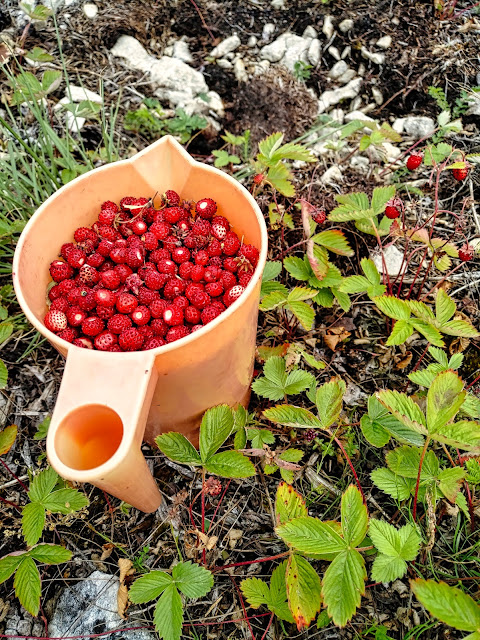Wild strawberry fields in Kassari, Hiiumaa
 |
| Wild strawberry fields in Kassari, Hiiumaa |
Fragaria vesca, commonly called the wild strawberry, woodland strawberry, Alpine strawberry, Carpathian strawberry or European strawberry, is a perennial herbaceous plant in the rose family that grows naturally throughout much of the Northern Hemisphere, and that produces edible fruits.
 |
| wild strawberry |
Evidence from archaeological excavations suggests that Fragaria vesca has been consumed by humans since the Stone Age.
Woodland strawberry fruit is strongly flavored, and is still collected and grown for domestic use and on a small scale commercially for the use of gourmets and as an ingredient for commercial jam, sauces, liqueurs, cosmetics and alternative medicine. In Turkey, hundreds of tons of wild fruit are harvested annually, mainly for export.
Most of the cultivated varieties have a long flowering period (and have been considered by botanists as belonging to Fragaria vesca var. vesca ssp. semperflorens). They are usually called alpine strawberries. They either form runners or multiple crowns in a cluster, fruit over a very long period with larger fruit than the common wood strawberry, and are usually propagated by seeds or division of the plants. The type in cultivation is usually everbearing and produces few runners. Plants tend to lose vigour after a few years due to their abundant fruiting and flowering with final decline caused by viral diseases. Large-fruiting forms are known since the 18th century and were called "Fressant" in France. Some cultivars have fruit that are white or yellow when fully ripe, instead of the normal red.
 |
| woodland strawberry |
Cultivars that form stolons are often used as groundcover, while cultivars that do not may be used as border plants. Some cultivars are bred for their ornamental value. Hybrids, Fragaria × vescana, have been created from crosses between woodland strawberry and garden strawberry. Hybrids between the woodland strawberry and the European species Fragaria viridis were in cultivation until around 1850, but are now lost.
Alpine strawberry has an undeserved reputation among home gardeners as hard to grow from seed, often with rumors of long and sporadic germination times, cold pre-chilling requirements, etc. In reality, with proper handling of the very small seeds (which can easily be washed away with rough watering), 80% germination rates at 70 °F (21 °C) 1–2 weeks are easily achievable.
Alpine strawberries are sometimes included as edging plants in herbaceous borders.


